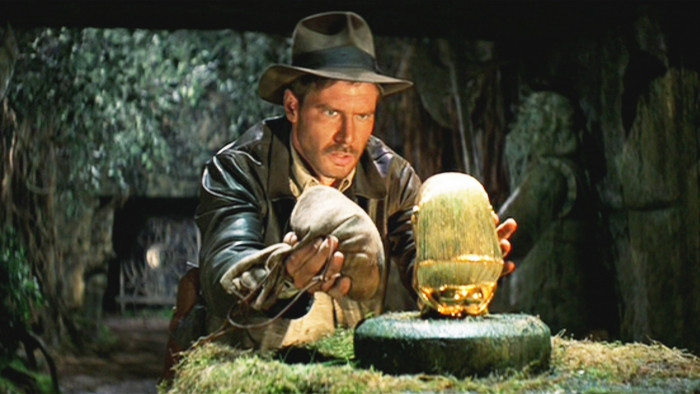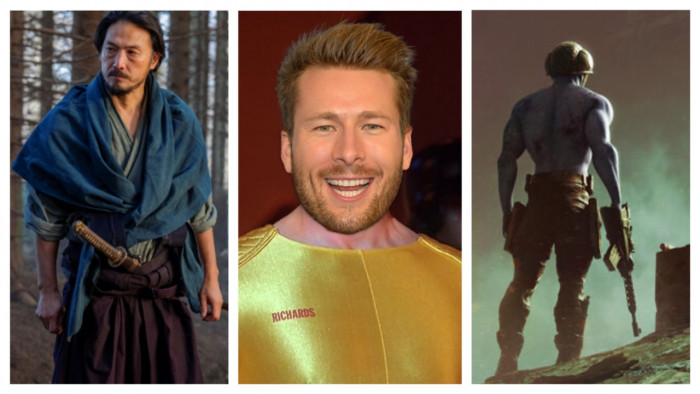Film critic David Thomson selects the obscure, unheralded and downright odd cinema every man needs in his DVD collection.
How do I know what you’ve seen? All I can do in this list is play the game of suggesting a few films you have likely not heard of – or films that you think you know (and maybe despise). You see, I am arguing that some films need to be searched out, and some reappraised. Whether I’m right or wrong is beside the point, and that’s why I may have included a film you will never find. Don’t we all think we recall scenes from films that aren’t actually there? Even the greatest directors and stars dream of the unmade film. The joy of mystery is that the puzzle is never quite settled.
Thomson is the author of The Big Screen (Allen Lane), out on 4 October, priced £25
(Images: Rex Features, All Star)
The Passion Of Joan Of Arc (1928)
I know, you’re a guy and it’s 2012, but put yourself to the test: watch The Passion Of Joan Of Arc by Carl Dreyer. It isn’t so much about God, France and Joan as it is about cinema, the human face and the emotion we can feel sitting in the dark entranced by a screen. Keep an open mind, because that’s the type that can be filled by beauty and the idea of films and passion.
The Passenger (1975)
David Locke is a journalist in the North African desert. It is hot, the hotel is seedy and Locke is disillusioned with life. So when another man in the hotel dies, Locke doctors the passports and takes up the other man’s life. As he follows the meetings in the dead man’s diary, he realises that his new life is that of a gun-runner. Soon he is being pursued by the people who buy guns, by the police and by his wife. Along the way, he picks up a girl (Maria Schneider) and heads towards his destiny. It’s a film noir in sun-drenched colour with no night scenes. And it’s mesmerising.
Boudu Saved From Drowning (1932)
Here’s one for wild guys: in Thirties Paris, a bookseller sees a despairing tramp about to drown himself in the Seine. He rescues him, and takes him into his household. This film is about an amiable monster who can do as much damage to a middle-class household and its hypocrisy as King Kong could. Boudu is a wild man, a force of nature, untamed by conventions, as natural and languidly disruptive as a fish.
M (1951)
Everyone has heard of Fritz Lang’s M, even if they haven’t seen it. It’s the story of a serial killer of children, pursued by police and underworld alike. It’s as good as everyone says. But I’m recommending the LA-set US remake. The film was abused and forgotten when it was made, but it’s brilliant and chilling. Director Joseph Losey was aware of a malignant society and he sees the murderer (David Wayne) as a terrible outsider. Wayne was known for light romance and comedy, but in truth he’s as good as Peter Lorre in the original, and maybe more touching.
The Small Back Room (1949)
You want a war film, with a hero? Try The Small Back Room, made by Michael Powell and Emeric Pressburger. Sammy Rice (David Farrar) has a tin leg and a big drinking problem, the results of his nerve-wracking job. When new bombs or mines wash up on the English shore as gifts from Germany, Sammy is an expert at taking them apart – before they explode. Yes, the clothes and the talk are a little old-fashioned, but it still gives us brave drunks doing desperate jobs and bombs that shatter reality.
The Magnificent Ambersons (1942)
After he had made Citizen Kane, Orson Welles directed this. It was shot and cut as Welles liked it (more than 130 minutes) before he went off to Rio to shoot a documentary. A print of his cut was sent to him so that he could follow the final work. Then the studio became worried: the film was too long, too gloomy. Welles was warned to hurry back. But he stayed in Rio and the studio slashed the film to 88 minutes. It’s still good, but your mission (should you choose to accept it) is to go to Rio and find the full version which has never come to light. The studio dumped all the cut footage in the ocean.
The Lady Eve (1941)
In a funny way, like The Passenger this is another study of dual identity. In this Preston Sturges comedy, Henry Fonda emerges from the Amazon after two years of research funded by the family beer fortune. His boat meets a liner and he soon falls for a gambler (Barbara Stanwyck). But Fonda feels betrayed when he learns his love’s real identity. He drops her, but then someone very much like her, an English aristocrat, appears at Fonda’s family home. “It’s the same dame!” warns Fonda’s right-hand man, but no one in love sees too clearly and the right hand doesn’t always know what the left hand is doing.
Broadway Melody of 1940 (1940)
DVD has changed the way we look at films, so you don’t need to bother with the first 80 minutes of this. It’s a flimsy story and tame comedy. Get to the Begin The Beguine number where Fred Astaire dances with Eleanor Powell in one of his greatest scenes. The Cole Porter song is done in three different styles. As always, Fred controlled the camera and so the dance is shot in a single full-figure set-up. Powell was an outstanding tap-dancer and Astaire delights in being with her. The rest of us can only look at that number, dreaming of being Fred.
My Sweet Dread (1977)
All right, now the game gets stranger. Perkins Cobb was an absent-minded genius – the thinking man’s Terrence Malick, some said. Cobb vanished, and may have killed himself. But the story is that he made a great film, My Sweet Dread. Now, I’m pretty sure I saw it on a plane once, but I wasn’t exactly well and I had other distractions. In my memory, it’s a masterpiece, but I’ve never found it again. It starred Warren Oates, Jean Seberg and Claudia Jennings, and it was a desert mystery, verging on the supernatural. I guarantee nothing, but if you find it I think you will be amazed.
Latest
Related Reviews and Shortlists


The 10 best war movies of the 21st century









